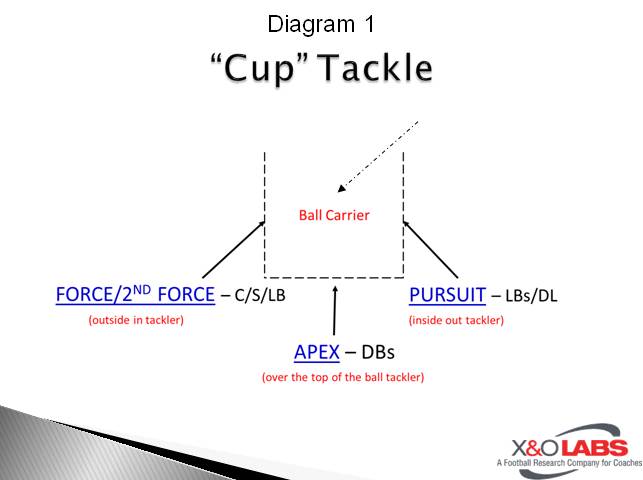By Zach Watkins
Co-Defensive Coordinator/Special Teams Coordinator/Linebackers
Washburn University (KS)
Twitter: @Zach_Watkins
Introduction
The offenses that we face weekly in the ultra-competitive MIAA conference are great at attacking the edge. Whether that be running the ball outside, throwing bubbles, utilizing their screen game or RPOs, block destruction on the edge is extremely important. With up-tempo offenses hitting the edge quickly and getting the ball out in space, it often becomes a numbers game. If the offense feels they have a numbers advantage, they will try to exploit it. With that mindset, we feel that we have to win some 1 on 1 battles on the edge to successfully defend these plays. We also teach proper pursuit angles through drills and practice as well as tackle leverage on the ball carrier from the pursuit players. We ultimately feel that defeating blocks on the edge and out in space are what helps us effectively defend these plays.
Attacking the Ball
Before we teach block destruction techniques, we will teach how to properly run to the ball to put ourselves in the best position to make the tackle. As we teach proper pursuit angles with drills and in practice, our “cup” tackle begins to show its’ effectiveness. In our daily tackle/turnover circuit, or in specific individual time, we will work on our “cup” tackle. I’ve heard people also call this inside-out tackle, vice tackle, etc. We teach our players that there will always be 3 types of players in a tackle:
- The force tackler - Outside-in tackler who turns the ball back inside. The force tackler will usually be a CB, S, or LB who begins the play outside of the box.
- The pursuit tackler - Inside-out tackler who does not let the ball cut back. The pursuit tackler will be someone running inside out to the ball, usually a LB or DL.
- The apex tackler - Over the top of the ball tackler who must make the play if the ball gets to him (Diagram 1). The apex tackler will always be someone staying over the top of the ball, usually a DB (high safety or CB).

By teaching the players to understand which type of player they are in any given tackle, they can understand where their help is and where they must position themselves to make the tackle. We will utilize a tacking/pursuit circuit to effectively teach the defenders which part of the cup tackle that they are assigned to fulfill.
Below is our “Cup” tackle pursuit drills. We begin with just the pursuit tackler keeping a good inside out path. We will progress into adding the force tackler. Then we will progress by adding the apex tackler. This way the players can understand in a logical progression which part of the cup tackle they are. (bottom right corner of the field)








